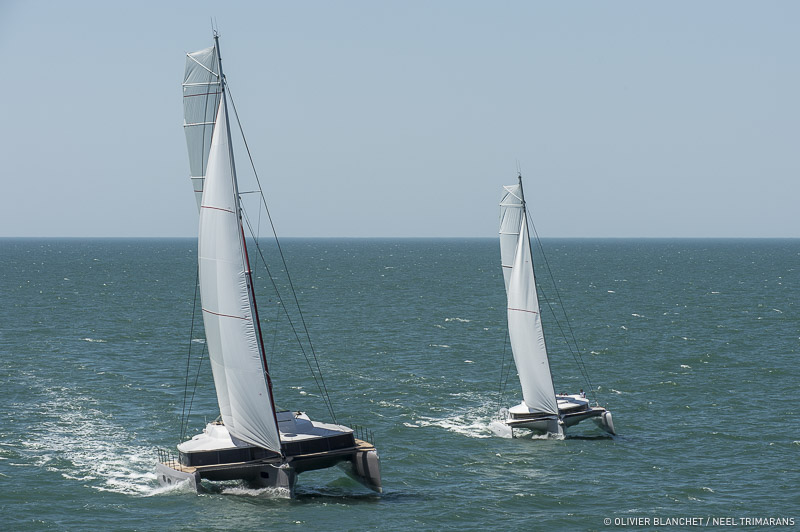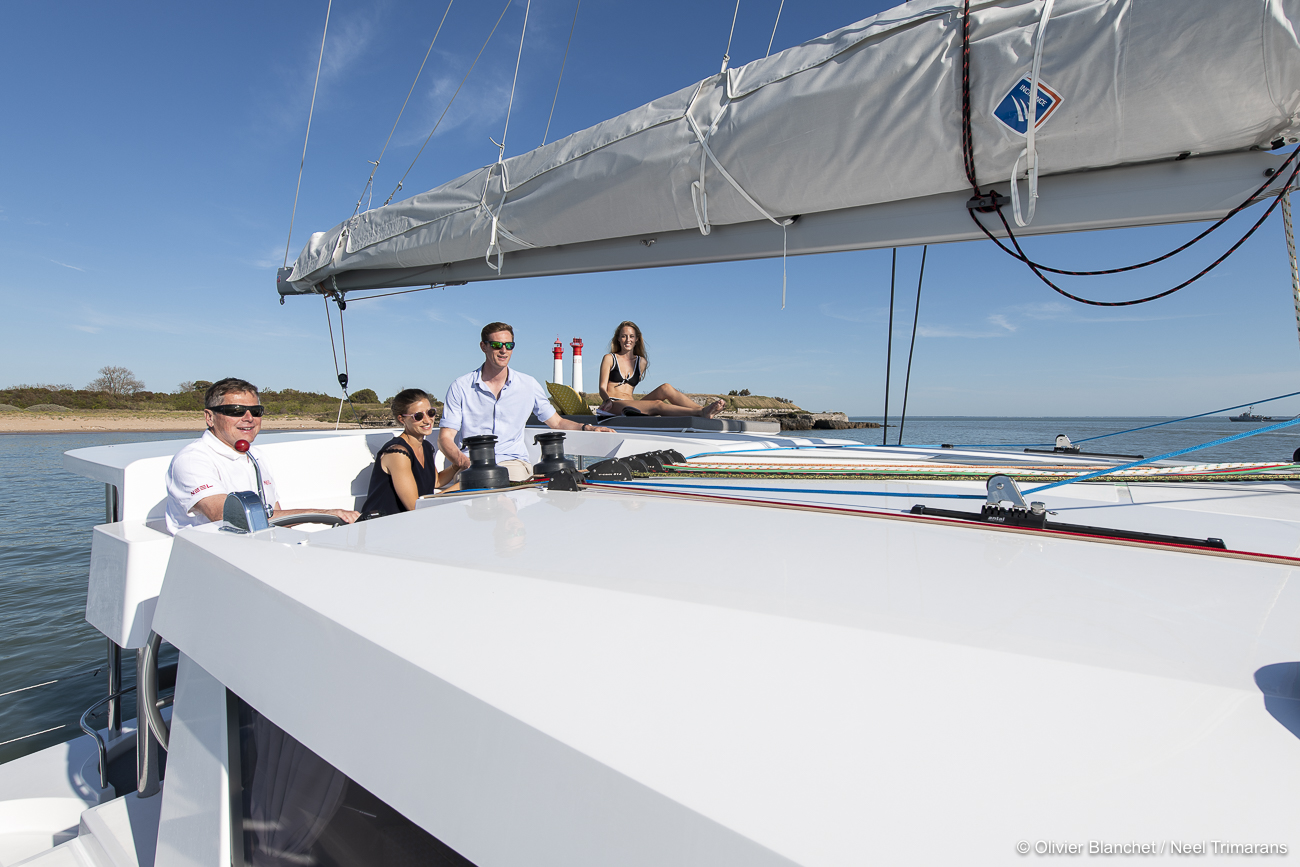Performance

The trimaran NEEL is faster than catamaran:
As shown in offshore racing, the trimaran is significantly faster than monohulls or catamarans. This is also true for cruising trimarans, as proven by the last ARC rally won by a NEEL 47.
The superiority of the trimaran is even more obvious when sailing upwind, especially due to the rig:
- On a catamaran, the forestay pulls from the front beam, the mast compresses a central beam and the shrouds pull the two floats supporting the forestay and mast beam: this platform deforms in many directions. Consequently, it is then impossible to have a rigid forestay
- On a trimaran, the forestay, mast and mainsail tension are structurally bonded to one strong, longitudinal beam : the main hull.
This configuration, as per a monohull, allows for a rigid forestay and good performance up-wind.
Performance is also enhanced by the centered weight.
The extra speed of the trimaran is an additional safety factor.
Steering finesse
The finesse of the steering is a feature highly appreciated by owners of NEEL-TRIMARANS, especially those who have previous experience on high-performance monohulls. This feeling at the helm is a combination of several factors:- A single wheel steering system connected to a single rudder by spectra lines.
- The most direct line path possible to optimize the sensations at the helm.
- The rudder stock on self-aligning bearings
- A deep rudder under the central hull contributes to the anti-drift surface and allows an efficient tacking.


NEEL trimarans are conceived for fast cruising
With an average cruising speed of around 10 knots, over 200 nautical miles are easily achievable each 24 hours. Speeds from 15 to 18 knots are often reached when the breeze freshens.
Weight centering is managed in order to limit pitching. The centre hull is rockered to facilitate tacking.
Floats are of a stretched form to privilege directional stability and advancement of the centre of buoyancy as a function of sail loading. The rigging is directly derived from racing trimarans, thereby achieving full cruising speeds up to twice as fast as conventional cruising yachts.
The sail surface area is generous with some 17m2 per tonne.
Finally, the trimaran configuration also facilitates sustained speed under motor propulsion. The low prismatic coefficient of the central hull means drag is very weak. The side floats are only very lightly in contact with the surface of the water.